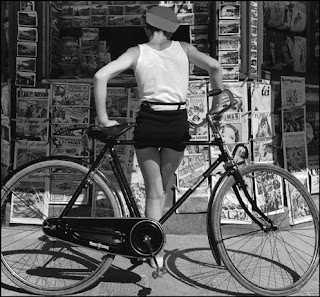Original title: On how your photo gear matters as much as you...the photographer // Or How people have been lying to you saying that the best camera that you have is the one you already have.
We have to stop romanticizing the idea that new or expensive photography equipment is evil or something that you really don’t need in order to become a better photographer. Let's be clear on one thing; Every camera has limitations and older gear have more limitations than new gear. Your camera is as good as you are. If you are a mediocre photographer, then you will take mediocre photos. It doesn’t mean that new gear will not help you take ‘better photos’ but it is true that your mediocre photos will look better with less effort or thought behind every frame (in terms of quality, auto exposure and sharpness).
It is very important to be very honest with yourself and know from the get-go what kind of photos you want to take. I know a lot of people would say that if you’re a photographer, you should be able to take any ‘photograph’. But if you have a 50 years old camera with a crappy lens, honestly, you will not be able to take great photos of fast cars racing at night (and this is just one example). Your camera was not made to fulfill that purpose and you can find ways to take this kind of photos with a crappy lens and camera but at the end of the day, your photos will not be as sharp as you want them to be. They won't be as lit as you want them to be and probably you will end up having a lot of blurry photos that are worthless.
Having said that, if you have a limited budget, the key word here is patience. Try to get a second-hand camera that gets you closer to what you’re trying to photograph. Indeed, you don’t need the latest camera to take photos of fast cars at night but you sure need a camera that at least has that capability. Photographers have been taking photos of fast cars at night for decades and they did it with film cameras and/or slower cameras, but they were able to do that because they studied every single part of the camera and they knew very well the limitations of their gear. It was the latest technology or the newest gear for a lot of them and they did the best they could. People often praise old photographs for what the photographer accomplished but believe me, having a good camera makes a big difference in terms of the ability of the photographer to capture the decisive moment. Cartier Bresson was an amazing photographer, so was Robert Capa, but they didn’t take their photos with crappy cameras. They did take photos with great cameras or at least cameras that were above the average quality of available cameras.

Henri Cartier-Bresson / ©Ara Guler
It was indeed a different generation of photographers and a different generation altogether. Nowadays we are more interested in technology than 50 or 70 years ago and we are so used to it that we look at everything through that lens. For many photographers, cameras were a mechanical thing rather than a technological device, but for many of us, and even more for young photographers, cameras are exactly that; technological devices that are expected to be programmed, hacked or even remotely controlled. A photographer can now take 11 photos per second and operates 3 or 4 cameras at the same time.
The concept of photography has changed, for better or worse, in hand with technology and we can’t keep saying that your gear does not matter. Your gear matters because you are the operator, you are the photographer with an idea and you need to get a proper tool or instrument that will allow you to get the job done. We need to start to be honest with yourself and recognise that some cameras will suck for what we are trying to photograph. No matter how good we are as a photographer, we still need a device to capture an image.
Your camera gear matters and so do you. But both rely on each other to get things done.
Thanks for reading! See you in the next one.
Jesus Rodriguez.
#photography #journalist #journalism #photojournalism #photojournalismalovestory #gearvsphotographer #cameravsphotographer #gearmatters #geardoesntmatter #photojournalist #filmcamera #portrait #magnumphotos #viiphotos #afpagency #filmcameras #technology












































































